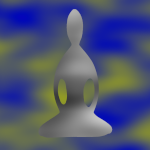Dear Friends,
In The Now Effect, Elisha Goldstein writes:
Stepping int the now doesn’t happen only when we stop and pause our bodies; we can enter into a space simply by acknowledging what we’re doing. … why not allow the movements of our lives to be the entry points into the now?
One of the most frequent movements that many of us engage in is walking. … What would happen if we brought some fresh eyes to the feeling of walking? Maybe we’d notice that we often walk with our head in front of our feet because we’re so busy thinking. What would happen if we stood straight up, walked slightly slower, and tuned into the environment all around us en route to our destination?
Rebecca Solnit wrote a detailed description of what we might notice:
Where does it start? Muscles tense. One leg a pillar, holding the body upright between the earth and sky. The other a pendulum, swinging from behind. Heel touches down. The whole weight of the body rolls forward onto the ball of the foot. The big toe pushes off, and the delicately balanced weight of the body shifts again. The legs reverse position. It starts with a step and then another step and then another that add up like taps on a drum to a rhythm, the rhythm of walking. The most obvious and the most obscure thing in the world, this walking that wanders so readily into religion, philosophy, landscape, urban policy, anatomy, allegory, and heartbreak.
Bhante Gunaratana says: “The purpose of walking meditation is not training the body but rather, through the physical activity of walking, to train the mind.” While he advocates walking quite slowly (“like a slow-motion replay at a football game”), that style of walking isn’t always reasonable in daily life. But if we can slow down just a little bit, we may be able to pay more attention to the changing and shifting sensations in the body.
For instructions on doing a walking meditation, you may want to check out this short article and talk on mindful.org:
https://www.mindful.org/daily-mindful-walking-practice/
Another position for meditation is lying down. I enjoy doing a body scan in the lying down posture. (Jeanne’s 20 minute body scan is one I like for this.) The lying down position is also useful if you’re trying to fall asleep. (The UCLA MARC page has a “Body Scan for Sleep” meditation that I’ve used.)
Ultimately, we can bring mindful attention to any position or movement in our day.
Thursday self-care tip:
Sharon Salzberg wrote a blog on “taking a stand for self-care”, which includes instructions for a standing meditation:
https://onbeing.org/blog/sharon-salzberg-a-standing-meditation-for-self-care/
So, whatever mindful practice you choose to do, know that you are investing in some self-care, which can give you energy, resilience, clarity to bring into the rest of your day.
With best wishes,
Andrea

I have had powerful insights into who I am and who I am not since starting this practice. Last summer at Anglin Lake I discovered the obvious… meditation is not simply on more circumscribed activity… like watching a sit com or eating a meal or reading a short story… it ultimately brims over into everyday activity one hundred percent of the time… not easy to arrive there…. but walking practice is the first step off the cushion into the big bad world….. R